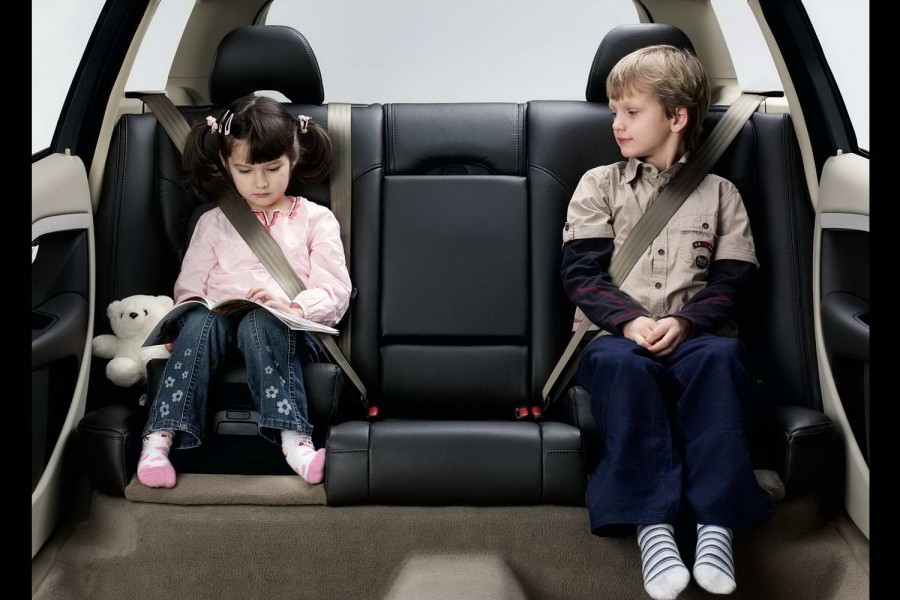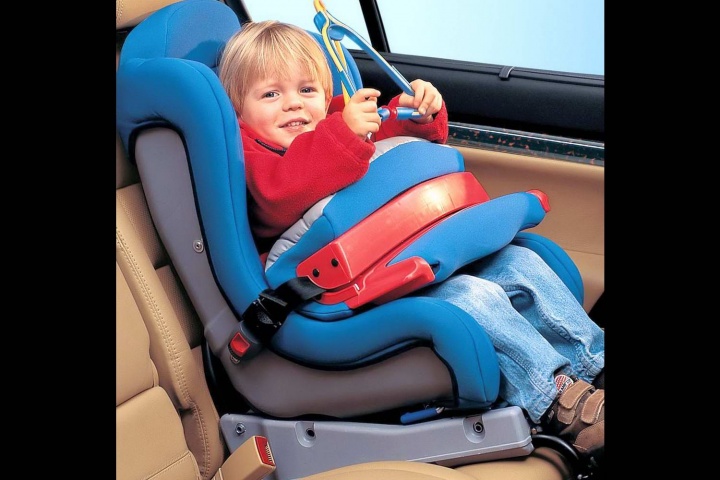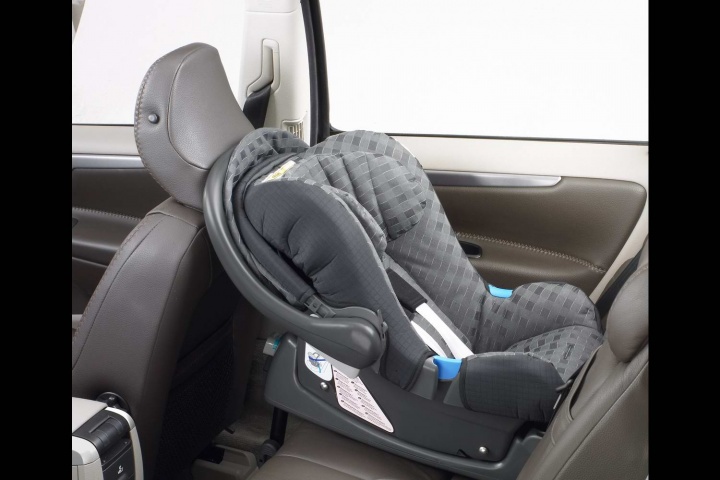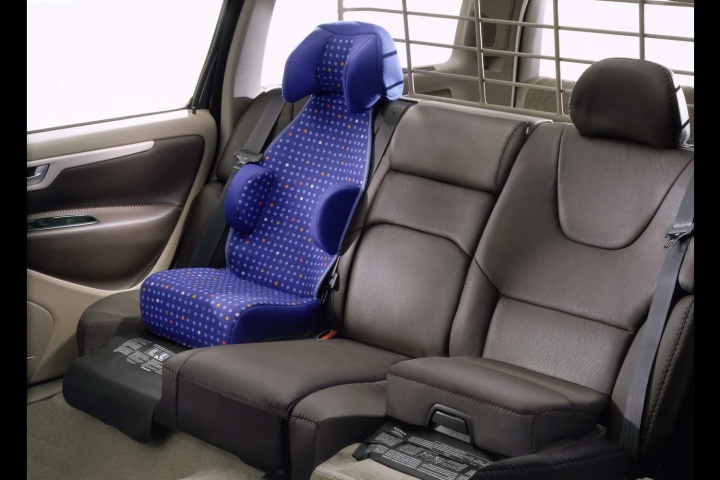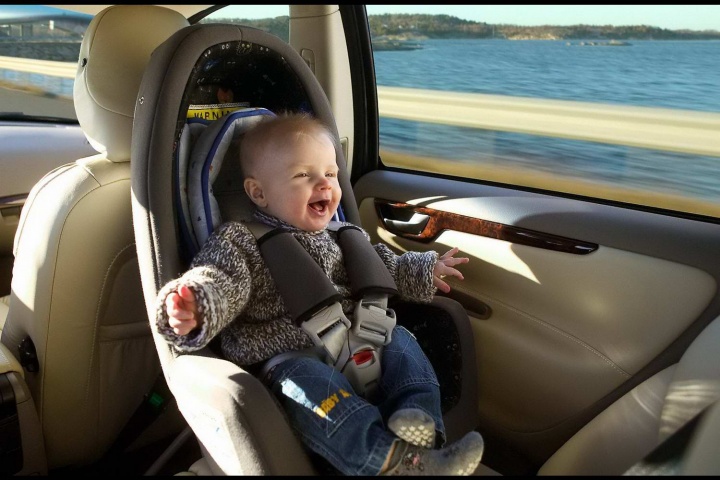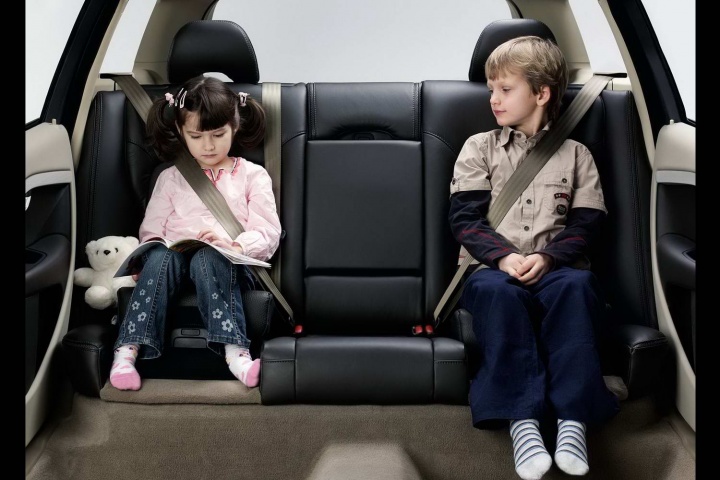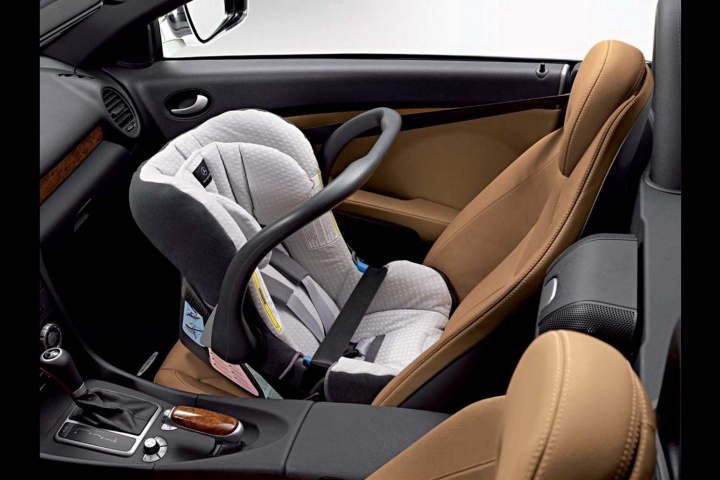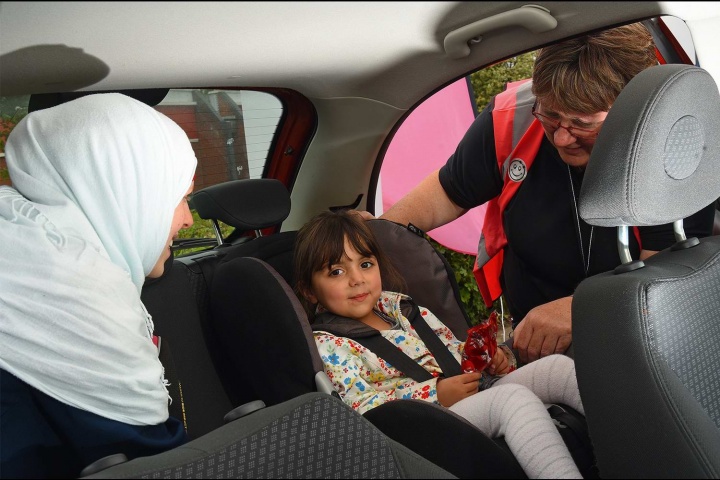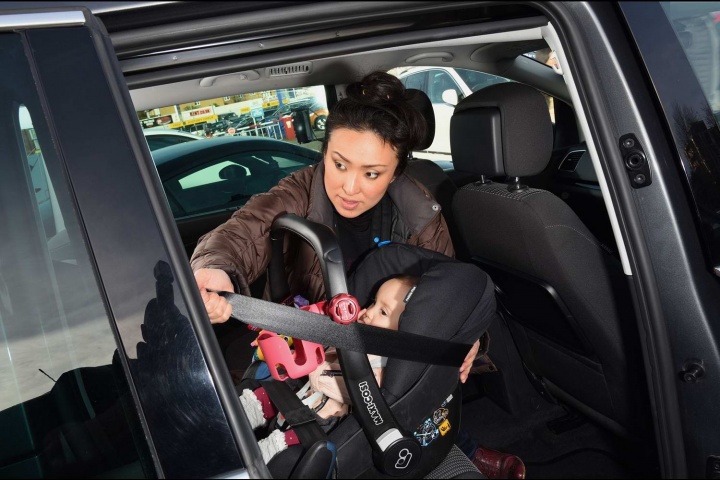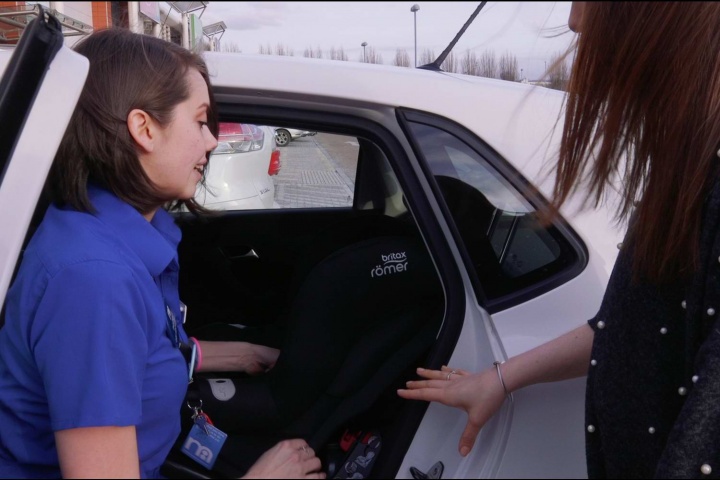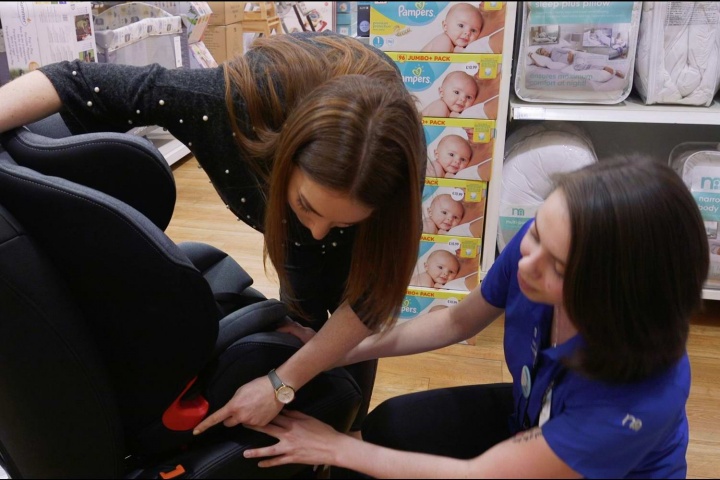Our children are our most prized possessions, but do you know how to safely - and legally - transport your children in your family car? Do you know when you should be changing your child seat, according to your kid's size or age? And what are the key 'dos' and 'don'ts' to fitting a child seat? Read on, to find out...
THE LAW
In its plainest form, the law states that all children under 150cm (4ft 11in, or 5ft for simplicity) or 36kg (79lb) MUST use a child restraint system (CRS) that is suitable for their height and weight, while travelling in a car or goods vehicle. For the purposes of this article, a CRS is basically either a child car seat or booster cushion.
It is also the law that drivers have a legal responsibility to ensure that every passenger under the age of 17 travelling in the car is appropriately restrained, so not only must your children be in a car seat but you (the driver) must ensure that said car seat is fitted correctly and it is suitable for their age and size. There is an exemption to the driver rule, which is taxi drivers - there is no obligation for taxi drivers to provide car seats for children, so (if you're going to be travelling in a private hire vehicle) you need to bring your own seat.
All child seats sold in Ireland must conform to EU standards UN ECE Regulation 4403/04 or Regulation 129. You will know if the car seat you are intending to buy meets these criteria, as they will be marked with a yellow 'E' symbol, also denoting their weight size and rating, on the side of the frame. Simply walk away from any car seat that does not have the 'E' mark clearly displayed.
THE SEAT GROUPS
It is a common misconception that child seats must be changed according to the age of the child - while there are loose guidelines and commonly quoted ages for children to graduate from one seat to another, or to stop using a CRS entirely, when it's time to make a change is in actual fact based on their weight and height.
To help parents, there are four main categories for CRS, which are often also referred to as 'Groups'. These run 0(+), 1, 2 and 3.
GROUP 0 (birth-10kg/22lb); GROUP 0+ (birth-13kg/29lb)
These are rear-facing baby seats, designed to place less strain on a baby's head, neck and spine. It is therefore advisable to keep your baby in a rearward-facing seat for as long as possible. The trigger to moving them to the next stage up (Group 1) is their weight, but if the top of their head is higher than the top of the seat, then they should move to a forward-facing seat irrespective of if they are beyond the weight threshold of 10/13kg.
There are extended rearward-facing child seats that can accommodate children up to 25kg/55lb, but these do not fit in all cars so check carefully before buying one.
GROUP 1 (9kg-18kg/20lb-40lb)
These will be forward-facing child seats with a (sometimes removable) harness. The aforementioned extended rearward-facing child seats (up to 25kg/55lb) would fall into this category, but most Group 1 seats are forward-facing. They include a pair of shoulder straps, which click together in front of the child (i.e. your child is not yet restrained by the three-point seatbelt of the vehicle).
GROUP 2 (15kg-25kg/33lb-55lb)
This is a high-backed booster seat without the harness, so in this instance the child would be secured by means of the three-point seatbelt fitted to the car, which will loop through hooks and slots in the side of the child seat and then clip into the regular buckle at the base of the vehicle's seat, as if an adult were sitting in the position. The high back of the seat continues to give the maximum possible protection to the child's head, neck and spine during their growth through the years, as these seats feature side bolsters that prevent too much lateral movement of the child in the event of an impact.
GROUP 3 (22kg-36kg/48lb-79lb)
This is a booster cushion, without the high seat back of the earlier group, so just the base of the seat to allow the child to sit high enough to use the car's three-point seatbelt safely. This is for use by children who are older and closer to 12 years of age, but this is not a strict guideline - it still goes on their weight and size. A three-point seatbelt should sit on a child's shoulder, not its neck, and sit across its pelvis, rather than its stomach.
WHY DO SOME SEATS STRADDLE THE GROUPS?
Some car seats will be listed as 'Group 1, 2, 3' or 'Group 2, 3'. If they're in 'Group 1, 2, 3', it means they feature adaptations, which mean they can be configured for a child from 9kg/20lb to 36kg/79lb - so, for instance, they begin life as a high-backed booster seat with a harness, then you can remove the harness and use a three-point seatbelt, before the upright rear of the seat can be removed at the end of its life to turn it into a booster cushion. A 'Group 2, 3' seat will not have the harness, so cannot be used by children less than 15kg/33lb, but can be used as above until 36kg/79lb.
ISOFIX AND I-SIZE
All CRS seats can be fitted into a car using its three-point seatbelts, including rearward-facing baby seats. There will be clips, fixtures and fittings on the frame of all seats that will allow them to be fitted without need for any further equipment than a car manufacturer provides. However, fitting a Group 0(+) or Group 1 seat with a seatbelt can be a time-consuming process and so there are also ISOFIX and I-Size fittings to make life easier for parents and, more importantly, as safe as possible for children.
ISOFIX has been the norm since around 2002 and is an international standard of built-in attachment points in the car's structure to which a child seat can be fitted. In essence, ISOFIX requires a base, which will 'plug' into the fittings of the vehicle, before an ISOFIX-compatible child seat can then be quickly clipped to or unclipped from. Most cars, even smaller hatchbacks, will have two ISOFIX points in the outboard seats of the second row of the vehicle, while some have a further fitting in the front passenger seat (see 'How and Where to Fit Child Seats', below). A handful of new cars have three ISOFIX fittings across the second row, while some seven-seat vehicles will have a further two in the back of the car; we will come onto these shortly.
I-Size is a European standard - Regulation 129 - that was introduced to our country in 2014. I-Size seats can be fitted to most ISOFIX systems, but they provide even better support for the child's head and neck, as well as improved side-impact protection in the event of a collision. I-Size seats can allow your child to stay rear-facing for much longer, up to 15 months in a baby seat if required.
HOW AND WHERE TO FIT CHILD SEATS
There is one very clear rule about where in a car child seats can be fitted and it pertains to Group 0/0+ baby seats - they must NEVER be fitted in the front seat of a car with an active passenger airbag. In the event of a collision, a deploying passenger airbag hitting a rearward-facing child seat can cause the child serious injury or even death, hence it is illegal to place a Group 0/0+ seat in an airbag-equipped front seat - drivers can receive at least three penalty points on their licence if found with a rearward-facing seat in front of an active airbag. Car manufacturers do allow owners to manually override an airbag and switch it off, often by using a slot in the side of the dashboard that is turned by the key, but it is just safer all round to only mount rearward-facing child seats in the back of a car.
There is no law against children sitting in the front seat of a car, providing they are using the right CRS for their height and weight. In the ISOFIX examples listed above, it will be Group 1, 2 and 3 seats that can be mounted in front-seat ISOFIX positions as a result. Again, sitting a child in a Group 2 or 3 seat in the front of a car will depend on if they are tall enough to have the three-point seatbelt correctly positioned on their bodies (over the shoulder and across the pelvis) when sitting in their CRS.
The shape of car seats, the length of seatbelts and the position of seatbelt anchor points are different in all cars, so it will be the case that not every type of child seat will fit all cars. It is the parents' responsibility to check the car's seatbelts work in tandem with the CRS they have chosen, if they are onto Group 2 and 3 seats, or the parents are not using ISOFIX or I-Size mounting for Group 0(+) and 1 seats. To reiterate earlier advice, if your child seat meets EU standard R4403/04 or I-Size Regulation 129, there will be a yellow sticker with an 'E' mark and weight guidelines on the CRS itself.
Car seats that use the adult belt to secure the seat should not have the seatbelt buckle sitting on the child seat itself, because then the movement of the car while travelling might open the buckle - or, in the event of a collision, the buckle could be broken, allowing the child car seat to become loose or detached in the car.
Finally, most new child seats come with an instruction manual to ensure you're fitting it and then using it correctly - so make sure you refer to it. Alternatively, get an expert on the subject (this will usually be someone at the place where you purchase the child seat) to fit the car seat for you, but make sure the expert shows you HOW to fit and remove the seat, so that you're not completely flummoxed the first time you have to carry out either procedure on your own. As a guide, when fitting a CRS with a three-point seatbelt, the adult fitting it should kneel on the child seat to exert their full weight onto it, before clipping the three-point belt and then pulling it as tightly as possible to eradicate all slack; this ensures the seat is then fitted as tightly as it can be.
CHECK IT FITS
The Road Safety Authority (RSA) has introduced a 'Check It Fits' programme, which is a full-time, nationwide, free and expert service that allows all family members/carers of a child to know that their seat is safely, securely and properly fitted in their car. The Check It Fits service travels the country, and you can check out more right here.
CARS WITH THREE ISOFIX POINTS IN ONE ROW
One of the most asked questions we get on CompleteCar.ie about child seats is 'can I get three chairs across one row of my car?' And, in reality, the answer to this question is: only in a limited number of vehicles. Three Group 1 or 2 child seats are large bulky items, so fitting them three abreast across one car needs not only the ISOFIX mounting points (if you're going to use them), but also the space to get seatbelt buckles fitted between the child seats. And there are only a very few new cars that have three ISOFIX points across one row, as well as the space to actually fit three seats alongside one another.
In terms of the ISOFIX positions, these are the Audi Q7 (Mk2, 2015-on), the Citroen C4 Picasso and Grand C4 Picasso (2013-on, renamed as the C4 SpaceTourer/Grand C4 SpaceTourer in 2018), the Ford S-Max and Galaxy (2015-on, in both instances), the Opel Zafira Tourer (2011-on), the Renault Scenic and Grand Scenic (2016-on), the SEAT Alhambra (2010-on) and the Volkswagen Touran (2015-on). The original Peugeot 5008 (2009-2016) also had three ISOFIX points across one row.
However, even in these instances, it still depends on the seats you've bought - some of them might not be physically wide enough to get three of the larger child seats across one single row. And, in terms of seven-seat vehicles (MPVs and SUVs), the rear-most two seats can often accommodate children, but they might not be ISOFIX-equipped as standard (it's sometimes a cost option to have ISOFIX in the third row) and it's not the most practical place to fit child seats, as access is trickier.
If the above doesn't quite answer your question about child seats, feel free to drop us a query via our Ask Us Anything page so we can help (it's a free service).

